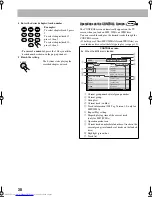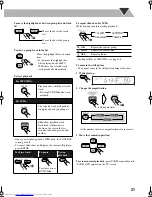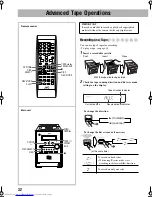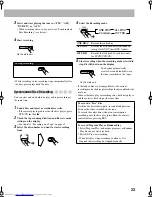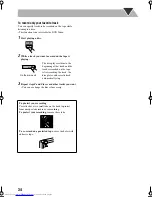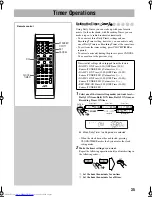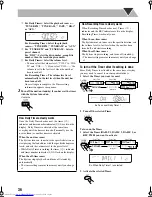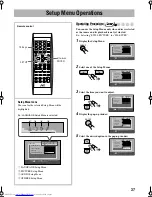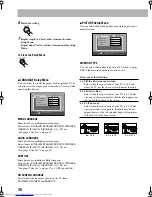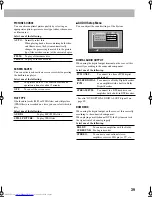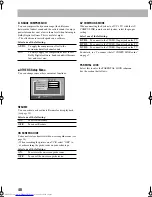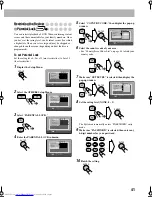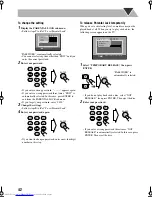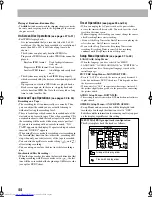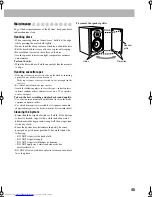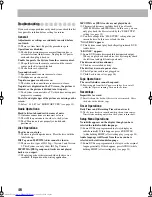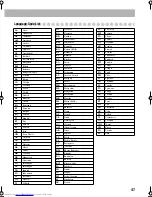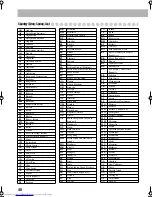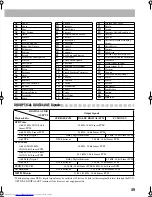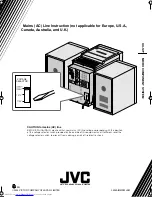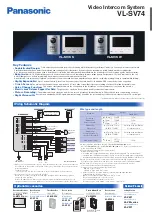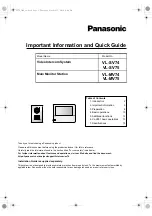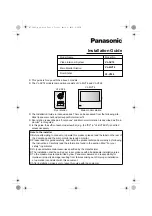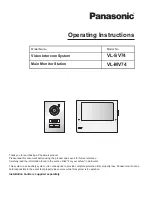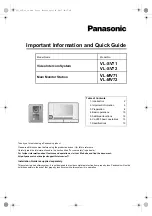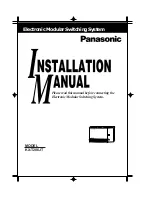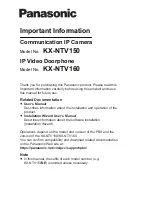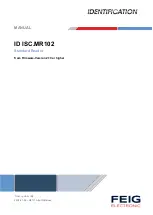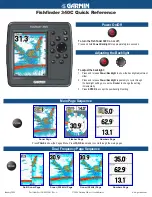
43
Additional Information
Learning More about This System
Getting Started
(see pages 3 to 7)
Changing the Scanning Mode:
• To enjoy the progressive video picture, connect a TV with
the progressive video input using component video cord.
Daily Operations—Playback
(see pages 12 to 16)
Listening to the Radio:
• If you store a new station into an occupied preset number,
the previously stored station in that number will be erased.
• When you unplug the AC power cord or if a power failure
occurs, the preset stations will be erased in a few days. If
this happens, preset the stations again.
Playing Back a Disc:
• When using an 8 cm disc, place it on the inner circle of the
disc tray.
• On some DVD, SVCD, or VCD discs, the actual
operations may be different from what is explained in this
manual, due to the programming and disc structure; such
differences are not a malfunction of this System.
• When discs* in more than one tray are loaded on the disc
trays, they are played in sequence as follows:
Ex.:When DISC 2 is selected:
DISC 2
]
DISC 3
]
DISC 4
]
DISC 5
]
DISC 1
(then stops)
* When no disc is loaded on the tray, that disc number is
skipped.
• You can exchange discs while playing or selecting another
disc.
• Some DVD Audio discs prohibit downmixed output.
When you play back such a disc, “LR ONLY” appears on
the display and the System plays back the left front and
right front signals.
• 3D Phonic setting is also applied to the optical digital
output signals through the DVD OPTICAL DIGITAL
OUT terminal.
• When using Resume on SVCD or VCD with PBC, the
playback might start on a position slightly different from
where you have stopped.
• You can use Resume only for the DVD/SVCD/VCD
except for some discs—depending how the disc is
programmed.
• Resume function does not work during Program Play and
Random Play.
• For MP3/WMA/JPEG playback...
– This System cannot play “packet write” discs.
– MP3/WMA/JPEG discs are required a longer readout
time than regular CDs. (It depends on the complexity of
the group/file configuration.)
– Some MP3/WMA/JPEG files cannot be played back and
will be skipped. This result from their recording
processes and conditions.
– When making MP3/WMA discs, use ISO 9660 Level 1
or Level 2 for the disc format.
– This System can play back MP3/WMA/JPEG files with
the extension code <.mp3>, <.wma> or <.jpg>
(regardless of the letter case—upper/lower).
– It is recommended that you make each MP3 file at a
sampling rate of 44.1 kHz and at bit rate of 128 kbps.
This System cannot play back files made at bit rate of
less than 64 kbps.
– This System can recognize the total of 1000 tracks and of
99 groups (each group can contain up to 150 tracks).
Those exceeding the maximum number cannot be
recognized.
Daily Operations—Sound&Other Adjustments
(see pages 17 to 20)
Adjusting the Volume:
• Be sure to turn down the volume before connecting or
putting the headphones.
Adjusting the Sound:
• This function also affects the sound through the
headphones.
Setting the Clock:
• “0:00” will flash on the display until you set the clock.
• The clock may gain or lose 1 to 2 minutes per month. If this
happens, reset the clock.
Unique DVD/VCD Operations
(see pages 21 to 23)
• During slow-motion playback, no sound will be
reproduced.
• One touch replay function works only within the same title,
though it works between chapters.
• One touch replay function does not work during Program
Play and Random Play.
• While zoomed in, the picture may look coarse.
Advanced Disc Operations
(see pages 24 to 26)
Programming the Playing Order—Program Play:
• If you try to program a 100th track, “MEM FULL (memory
full)” appears on the display.
• While programming steps...
Your entry will be ignored if you have tried to program an
item number that does not exist on the disc (for example,
selecting track 14 on a disc that only has 12 tracks).
• You cannot use Program Play and Random Play for JPEG
discs.
• You cannot eject tray while in Program Play.
Summary of Contents for GVT0131-010A
Page 165: ...MEMO ...


